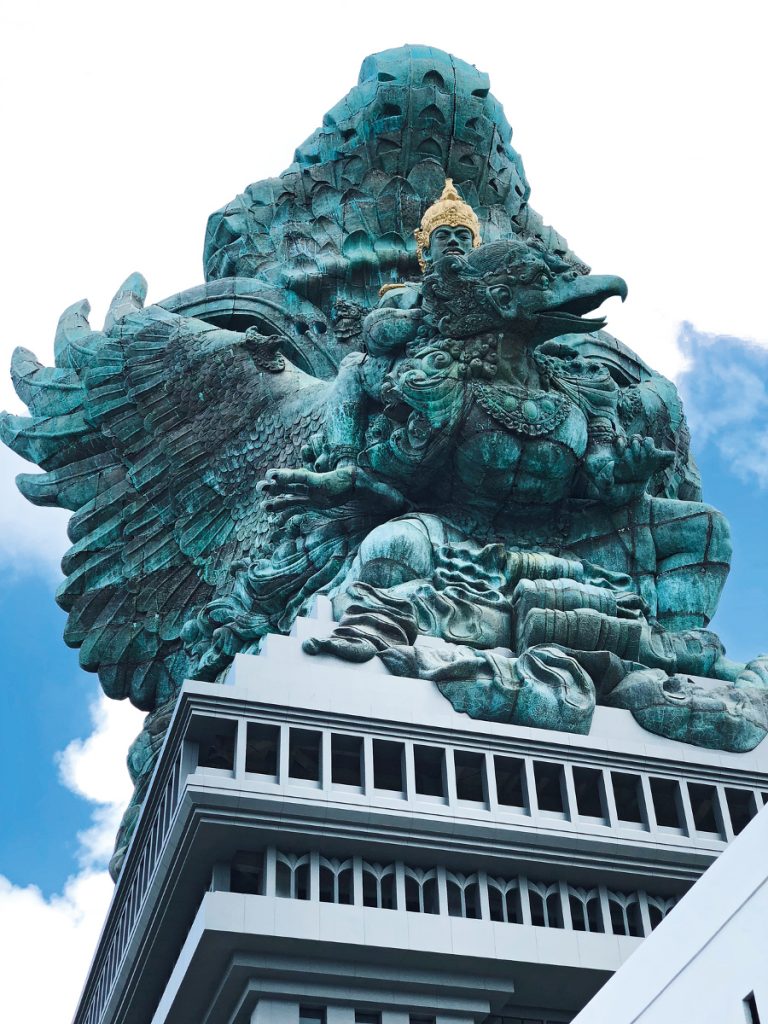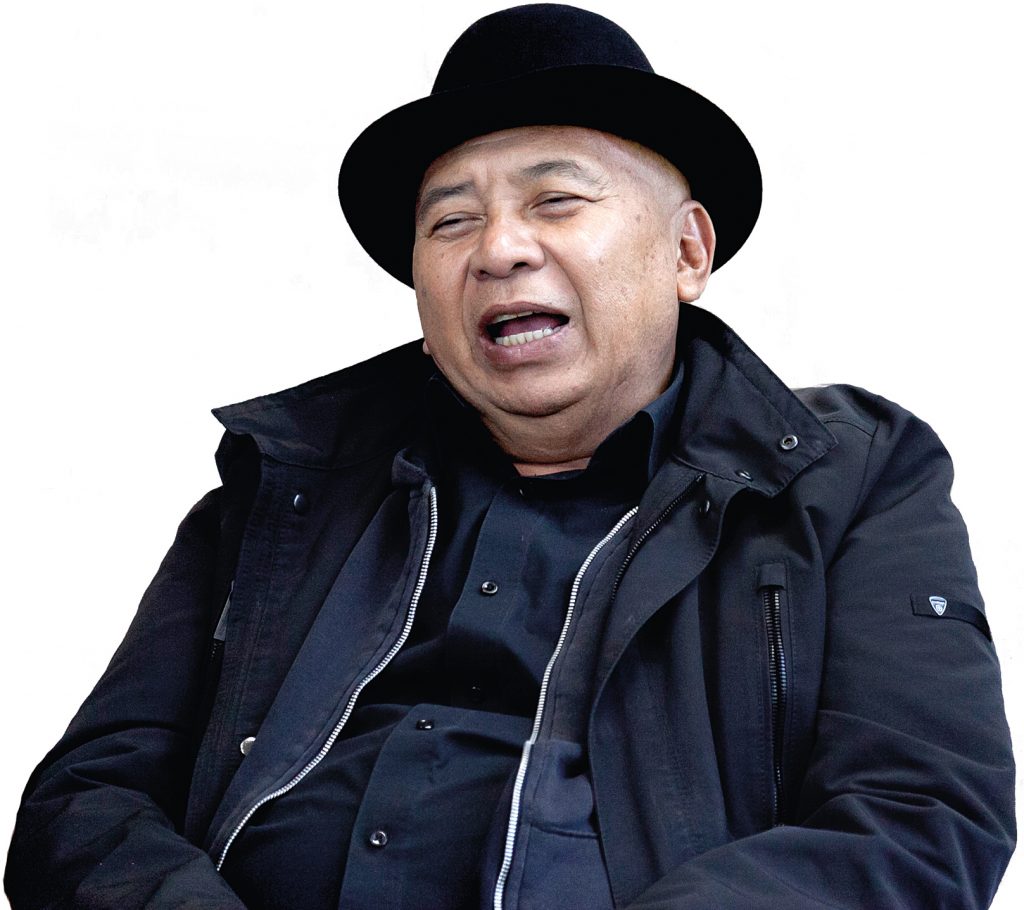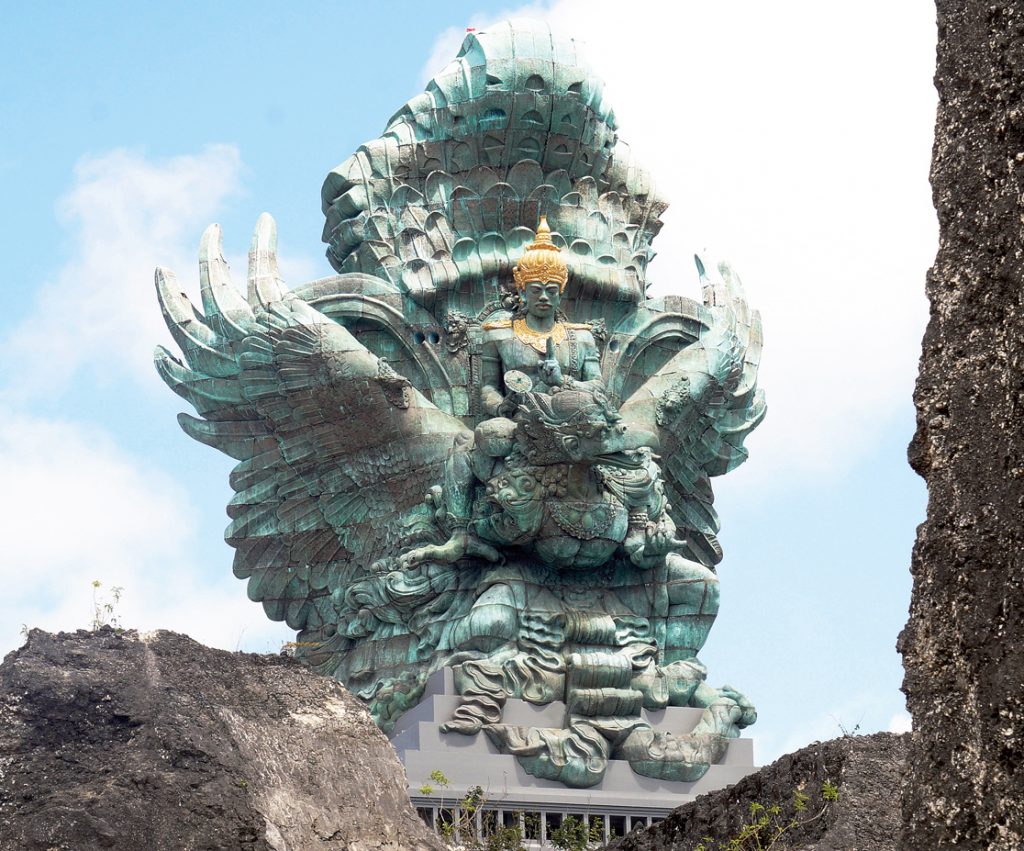Rising at a height of 121 meters on top of a pedestal, the statue of Garuda Wisnu Kencana (GWK) has finally been completed after 25 years of construction. This landmark icon stands proudly on the top of Ungasan hill, inside the Garuda Wisnu Kencana Cultural Park area.
The gigantic copper and brass sculpture is of the Hindu God Wisnu sitting astride the mythical bird Garuda, said to be the god’s companion and vessel. With the claws of the Garuda gripping an enormous concrete pedestal, the statue is currently the largest in the world, and third highest in the world – and is now the pride of the people of Indonesia!

In 2012, Alam Sutera Realty Tbk. acquired the ownership of GWK Cultural Park area. Alam Sutera conducted various area improvements to develop GWK Cultural Park as the best cultural and tourism destination in Bali and build the Garuda Wisnu Kencana statue comprehensively towards perfection. To create the Garuda Wisnu Kencana statue, Alam Sutera conducted a number of technical tests to get the accurate configuration, including the wind tunnel test in Melbourne and Toronto. Construction consultants were brought in to ensure the pedestal, that was the statue’s foundation, was engineeringly sound.
As a final phase in the recent completion of GWK statue construction, Alam Sutera held the Melaspas ritual last month at the GWK Cultural Park. Melaspas is a Hindu Dharma purification ritual to cleanse buildings at a spiritual level. The Hindu religion believes in the world of the seen or Sekala, where the real world can be visibly seen in its physical form, and the unseen or Niskala, where the world can not be seen but is present and sensed. This Niskala world is believed to create energy in the form of spirit to the Sekala world, so the Sekala and Niskala world exists as an inseparable unity and complement each other, thus giving birth to Taksu or the balance of spiritual energy which brings about good.
This Melaspas ritual is the last series of rituals, following of the Pasupati ritual held before on the GWK Statue Pedestal Plaza lobby for placement of the GWK Statue crown in May. The Pasupati ceremony held when placing Wisnu’s crown depicted the request for blessings from God or Sang Hyang Widhi Wasa to give positive universal life and good energy in the Bhuwana Agung universe, upon that which has been built and developed by Alam Sutera at GWK Cultural Park.
Fundamentally, the traditional and religious ritual series aim to foster harmony between Garuda Wisnu Kencana Cultural Park and the GWK statue, with the surrounding nature and humans. With this ritual, Alam Sutera and GWK Cultural Park have fulfilled the traditional requirements and adhered to Balinese community cultural wisdom.
MEET THE ARTIST, NYOMAN NUARTA

NOW! Jakarta’s Sari Widiati sat down with the designer of the GWK, I Nyoman Nuarta, about the creation of this iconic landmark.
Can you tell us about the process of designing the statue?
The most impressive part while making the statue was its problems. The statue contains not only art element but also technology and science. I used magnifying scales and pattern segmentation which I discovered around the 1980s and was already patented. This is a large statue and no one has ever created a statue using scale enlargement technology. Without making a sample, it took shape and we saw the result directly.
The unique process was that we cooperated with experts from different disciplines. How can I bravely say the statue is strong? I brought the mock-up to the aerodynamic experts and tested it in a wind tunnel in Canada where we calculated the maximum velocity of the wind that may hit the statue. We also had to make it resistant to lightning strikes. We drilled the land up to 150 metres and until it reached the groundwater level so any such strikes could be absorbed. It’s also earthquake proof. We have installed lights on the statue to warn aviation traffic.
What do you hope to convey through this masterpiece?
The statue describes Vishnu in meditative state, with eyes half closed and an aura of total peace and serenity, riding on the back of the faithful Garuda bird. They’re inseparable. In Hindu mythology, Vishnu is a symbol of the preserver and protector of the universal equilibrium. The story is Garuda keeps his promise to Vishnu to be his perennial vehicle because Vishnu had freed Garuda’s mother from slavery. It’s an ancient symbol that is still connected to the modern era, where the universe is our source of life and needs to be preserved and protected. Garuda is a symbol of the powerful human being who is responsible for the maintenance of nature’s wealth. One could connect this to our responsibility to protect the environment.
What do you hope for the development of the GWK for the future?
I hope Indonesians can understand that there are children of the nation who still love its culture. Garuda Wisnu Kencana is dedicated to the beloved nation as a new icon of the country. I put my dignity at stake to realise this project. I didn’t care about those who said I was too ambitious. I sacrificed my family to complete this for almost 30 years. It’s not easy to realise one’s ideals. We have to prepare mentally because all good intentions are not necessarily accepted. I hope GWK has a positive impact and can benefit the people of Indonesia, and the country’s tourism and culture.
GWK PROJECT TIMELINE
1989
Indonesia’s ‘Father of Tourism’, the late Joop Ave had the vision to build a landmark for Indonesia.
1990
The development of the GWK began, involving both the central and regional governments.
1993
President Soeharto approved the project.
1997
Official Ceremony of the development of GWK mega-project.
1998
The project was dormant due to the financial crisis.
2000
The artist hosted a GWK Expo where the statue’s parts, Vishnu and Garuda were exhibited.
2009
Bali Governor I Made Mangku Pastika approved the development of the project.
2012
PT. Alam Sutera, Tbk acquired the project.
2018
The statue was completed and officially inaugurated.
THE STATUE OF GARUDA WISNU KENCANA
IN A NUTSHELL

~ Total cost: IDR 450 billion
~ 754 modules, each module size 3×4 meters and weight more than one ton.
~ 121 metres, or 276 meters from above sea level.
~ Wings span across 64 metres.
~ Total Weight: more than 3,000 tons or similar to a 23-storey building.
~ Designed to the last next 100 years.
~ Materials include copper imported from Japan, China and Latin America, brass imported from Germany, skeleton structure made from non-corrosive stainless steel imported from India.
~ Earthquake resistant up to magnitude 8 and wind velocity up to 250 km per hour.
~ All parts of the statue made at artist’s workshop, NuArt in Bandung, West Java.
~ Now the third tallest statue in the world, after the Spring Temple Buddha (China) and the Laykyun Sekkya Buddha (Myanmar).
GARUDA WISNU KENCANA CULTURAL PARK
GWK Cultural Park is set on 60-hectare of land located in Ungasan. The area consists of various venues among them Plaza Wisnu, Lotus Pond, Festival Park that covers 5,000m2 and is often selected as a venue for national and international large scale events, Street Theatre, Amphitheater which is a venue for art and cultural performances that can accommodate up to 600 seats. Art performances are held daily for visitors such as Joged Bumbung, Nusantara dance, Balinese Parade, Kecak Garuda Wisnu, and Legong dance.
The park’s dining outlets, Jendela Bali-The Panoramic Resto and New Beranda Restaurant serve an array of Indonesian and international cuisine.






